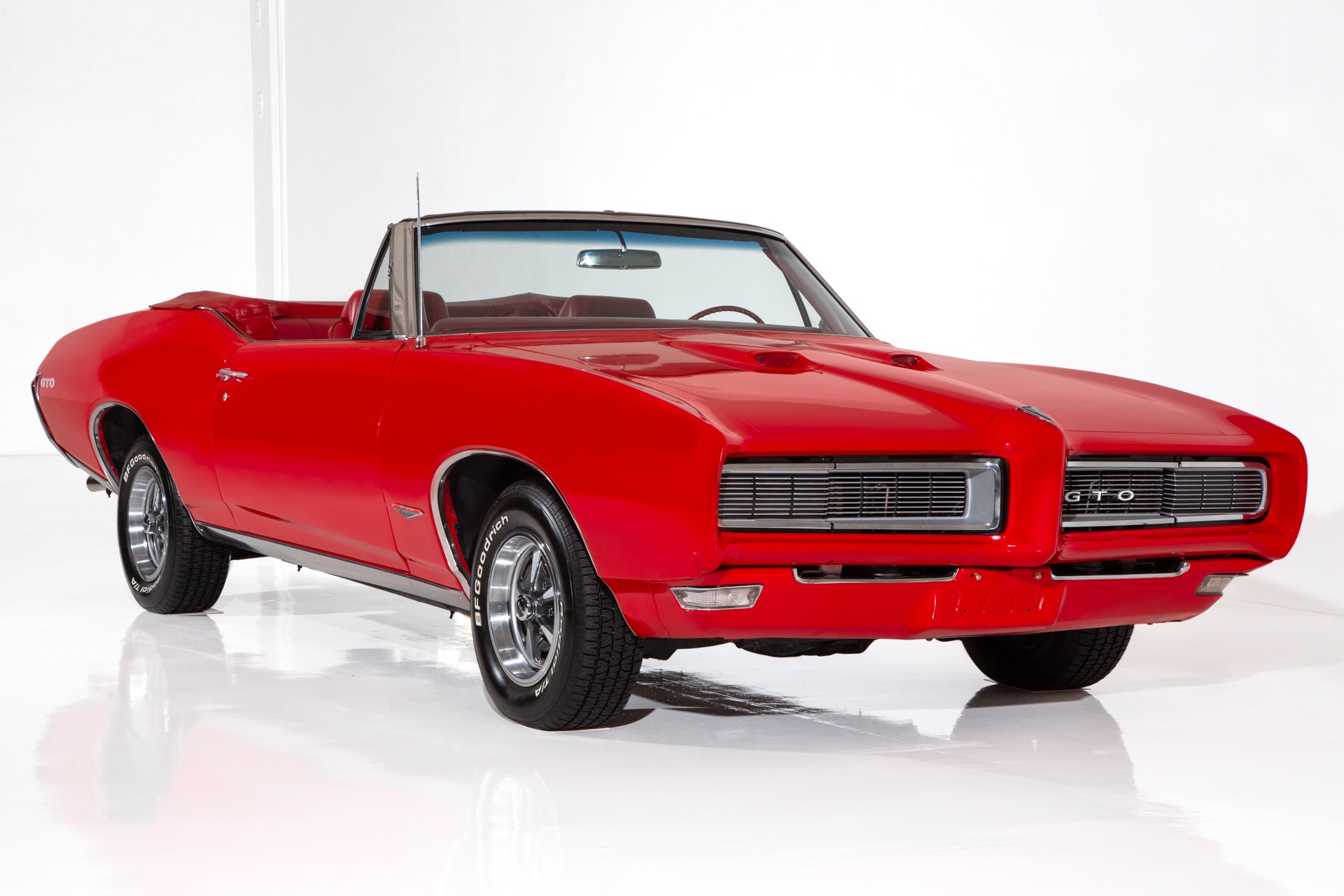
Pontiac automobiles are American automobiles owned by General Motors. They were initially manufactured by General Motors' Pontiac Motor Division. From 1919 to 1973, Pontiac cars were manufactured and sold by General Motors. Pontiac cars remain popular in many parts the world. This article details Pontiac’s history as well as some of the most famous models from that era. Continue reading for more information about Pontiac brands and what makes these cars special.
General Motors
Pontiac is ending production after a long record of selling high quality cars. Last year, only one Pontiac rolled off a factory line. The company's era of performance, speed, and sex appeal is over. Pontiac is being discontinued by the end 2010

Silver Streak
From 1935 to 1956 Silver Streak Pontiacs can be easily identified by their parallel ridges at the trunk and hood. These ridges are reminiscent of an old man's suspenders. Pontiac was the only car to have this style, but it had its flaws. Here is a brief history about the Silver Streak. Pontiac began to make more modern vehicles after the war.
G-body models
The classic, boxy design of the Pontiac G-body models cut a stylish profile in a time when boxy was in. G-body models that are the most practical have even been dubbed the wagon. G-body models also make it easy to modify. There is also a great aftermarket support. These are some tips to enhance your G-body. These are some tips for improving the performance and efficiency of your Pontiac.
Redesign in 1973
The Redesign Pontiac cars of 1972 led to a dramatic increase in production of full size vehicles. The Pontiac Catalina's production nearly met the demand for full-sized Pontiac models by 1971. Also, Bonneville and Grand Ville saw significant gains. Significant changes were made to the full-size 1973 Pontiac car line after the redesign. The car's new look featured a substantial energy-absorbing bumper, and a full width grille with horizontal bars.
In 1980s, body styling changed
Pontiac began to shift its focus from roadability to convenience and luxury as the market for midsize cars matured. One exception to this trend is the Grand Am. This model was part a revamped line that featured "Colonnade." styling. Grand Prix luxury and Trans Am performance were the Grand Am's goals. Bill Collins, the assistant chief engine of the original GTO and John Seaton (a chassis wizard), collaborated on the Grand Am's design. Collins wanted to replicate European sedans.

Last model sold 2010
The Pontiac brand will be ending after more then 80 years. In the last few years, Pontiac became unprofitable. It sold rebadged Chevrolets for a fraction of its original price. Although the rebadging was required to stay competitive with Chevrolet, the cars were not as good as its rivals. Pontiac was ultimately canceled. The Pontiac Vibe was the last Pontiac car model sold in the United States in 2010.
FAQ
What is the distinction between a mechanic or an automotive technician?
These two jobs are very similar but not identical. The mechanic fixes cars while the technician maintains them.
A mechanic must possess good manual dexterity, and be able perform simple tasks efficiently. They should be able to accurately diagnose problems and repair them efficiently.
An automotive technician requires more technical skills than a mechanic. They must be able to read blueprints and use tools such as drills and wrenches.
They must be able and competent to safely perform complicated procedures. They should also be familiarized with the different types of engines as well as electrical systems.
They should also be able understand how different parts interact.
A mechanic typically earns less than an automotive technician. Both jobs offer many possibilities.
What qualifications are necessary to become a mechanic
You will need to pass several exams in order to become a mechanic. These include:
-
A general knowledge assessment
-
A practical exam
-
An apprenticeship test
These tests are designed for you to understand the basic concepts and principles of mechanics before your start as a technician.
After passing these tests, you will be eligible to become a mechanic. You will still need to complete an apprenticeship. This will involve training in the trade.
To learn all you can about vehicle repair, you will need to take classes and workshops. Experienced mechanics will also be required.
A mechanic must be highly focused and attentive to detail in order to succeed. Repairs to vehicles require you to pay attention to every detail.
You'll need patience and persistence to become a successful mechanic. This may not be the career path that you want if you aren't able to follow directions.
However, if you love cars or enjoy working on them, you might be happy in this field.
What length of an automotive course is it?
An automotive course lasts 3 years.
The first year focuses on theory and learning about cars. The second year is dedicated towards practical training. This includes learning how to drive, fix engine problems, and doing other maintenance jobs around your car. The last year of your training is spent on practical training, where you learn how to fix real-world problems.
What is the best way to learn about car mechanics
To be an auto mechanic, you don't have to know much about cars. The only thing you need is the ability to fix them. Most people begin by changing brake pads and tires, before moving on to more complicated repairs.
You will need to understand written instructions, read diagrams and follow the basic rules of good practices. You'll also need to be able to judge whether parts need replacing or repairing.
It is important to understand that vehicle repairs should only be attempted by those who have received the proper training. This is especially true if your job involves expensive parts like transmissions or engines.
Even though you won’t need to know much more about cars, you will still need to have an in-depth understanding of mechanics and physics. This will include understanding the basic principles of engine operation and brake function.
You should also be ready to handle all kinds of situations. You might be required to work on a vehicle that was involved in an accident. Also, you'll need to be familiar with dealing with accidents or breakdowns.
You must also be willing to learn quickly. You will need to be able not only to diagnose problems but also to perform simple maintenance tasks like tightening bolts and nuts.
Is it hard being a mechanic apprentice
Although it's not an easy task, you will learn quickly and have many opportunities to advance.
You must be patient and persistent. You will also need to be able fix cars, trucks and motorcycles.
Customers and family members will put pressure on your shoulders to help you succeed. But you should never feel pressured into making decisions you aren't comfortable with.
This could be an excellent career choice for someone who enjoys fixing cars. This job allows you to make a decent wage and build up your company.
Perhaps you prefer a different route. This is where you might be interested in becoming a technician.
This could involve using your technical knowledge to support other employees. Technical support could include helping technicians to troubleshoot issues or teaching them new techniques.
Another option is to be a service advisor. Here, you'll provide advice and assistance to customers when they bring their cars to a garage.
Your choice is based on what you choose to do. There are many choices available and you can choose what suits you best.
Statistics
- There were 749,900 jobs available for automotive service technicians and mechanics in 2016, which is expected to grow by six percent through 2026. (jobhero.com)
- According to the BLS, total auto technician employment is expected to exceed 705,000 by 2030. (uti.edu)
- 52% of Mechanics in the United States think their salaries are enough for the cost of living in their area. (indeed.com)
External Links
How To
How to Become an Auto Technician
An automotive technician performs repairs and maintains vehicles. He/she works at car dealerships, auto shops, garages, service centers, etc. He/she assists customers in fixing their cars, trucks or motorcycles. An automotive technician must be able to diagnose problems and make repairs quickly, safely, accurately, and efficiently.
If you want to be an automotive technician, you need an associate degree from vocational school. After completing this program, he/she will need to pass the National Institute for Automotive Service Excellence's (ASE) certification exam. ASE stands to American Society of Mechanical Engineers. There are two parts to the ASE certification exam. The first section tests the ability to use mechanical knowledge. The second section tests the ability to apply practical skills. You will need to attend an authorized testing site in order to pass the test. These locations can be found online or at your local auto dealer.
After passing the test, a candidate must pass a state examination before becoming licensed as an automotive technician. This process is different depending on where you live. Some states require candidates to complete a training program, while others let them study on their own. In addition, some states license technicians immediately after they receive their license, while others wait until they have completed at least six months of employment as an automotive technician.
An applicant should apply to a local auto shop in order to start their career as an automotive technician. Once hired, most new employees start out working as apprentices. Apprenticeship programs usually last three years. This is when a student can learn how to do basic repairs such as changing oil, adjusting brakes and replacing tires. Some students will learn advanced repair techniques, such as changing shocks, installing air filters, and replacing engines. Many schools offer classes during regular hours. Some schools also offer evening classes when needed.
Once a student is done with his/her apprenticeship he/she can become a master journeyman. Journeymen usually spend four to five year learning how to install major systems like transmissions, differentials steering gear, suspensions, drive shafts, and steering gear. Journeymen also learn to fix complicated problems, such as rebuilding engines or troubleshooting electric components. Employers prefer to hire journeymen as they are familiar with the job and can anticipate customer needs.
If a candidate successfully passes the required exams and receives a license, he/she might want to consider starting his/her own shop. According to Bureau of Labor Statistics (2010), almost 1.7million automotive mechanic jobs were on the market. That number was expected to grow by 18 percent from 2009 to 2020. If a candidate decides to open his/her own shop, he/she should prepare to invest many thousands of dollars in equipment and supplies.
The salary of an automotive technician will depend on many factors including where you live, your education level, experience and the type of employer. On average, a jobless person could expect to earn $20,000 annually. Someone with only a high school diploma could earn around $21,000 per year. An associate's degree earns approximately $24,000 annually. A technician with a bachelor's degree earned approximately $27,000 annually. The average annual salary for those with master's degrees was $32,000. Salary increases can be common. A professional who earns less that $30,000 today could reasonably expect a $40,000 increase in the next few decades.